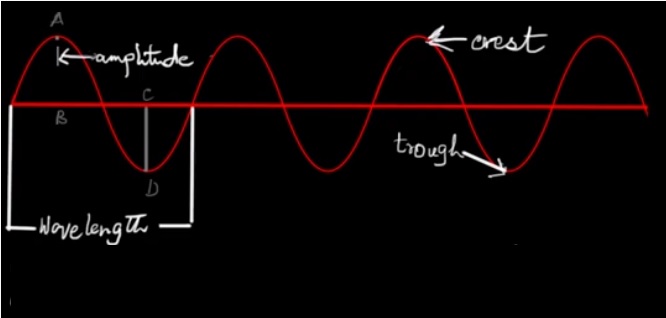Whether it's the chirping of birds, the melodies of music, or the voices of our loved ones, sound surrounds us constantly. But have you ever wondered how sound is produced and how it travels from its source to our ears? In this blog, we will delve into the fascinating world of sound, discussing its production, propagation, and important concepts like frequency, time period, and wavelength. So, let's begin this exciting exploration of sound together!
Production of Sound:
Sound is created by the vibration or disturbance of an object. When an object vibrates, it sets the particles of the medium it is in motion, causing a chain reaction of particle collisions. These collisions transfer energy from one particle to another, creating a sound wave. For example, when you strike a tuning fork, the metal prongs vibrate, producing sound waves that travel through the surrounding air.
Propagation of Sound:
Once sound is produced, it propagates or travels through a medium such as air, water, or solids. Let's focus on sound propagation through air, which is the most common medium. As the sound waves move through the air, they create areas of compression and rarefaction. In the compression regions, the air particles are close together, while in the rarefaction regions, they are spread apart. This alternating pattern of compressions and rarefactions forms a longitudinal wave.

Frequency:
Frequency is a fundamental property of sound. It refers to the number of complete vibrations or cycles that occur per second and is measured in hertz (Hz). An increase in frequency results in a higher pitch of the sound. For example, a dog whistle produces high-frequency sound waves that are beyond the range of human hearing, while a bass guitar produces low-frequency waves that we perceive as a deep tone.
Time Period:
The time period of a sound wave is the duration it takes to complete one full cycle of vibration. It represents the inverse of frequency and is expressed in seconds (s). The formula to calculate the time period (T) is T = 1/f, where f represents the frequency. For example, a sound wave with a frequency of 100 Hz will have a time period of 1/100 seconds, which equals 0.01 seconds.
Wavelength:
Wavelength, symbolized by λ (lambda), represents the distance between two successive points in a sound wave that exhibit phase coherence. This length is usually expressed in meters (m). The relationship between wavelength, frequency, and the speed of sound (v) can be expressed as λ = v/f. Inversely, when the frequency rises, the wavelength correspondingly diminishes, and conversely, when the frequency decreases, the wavelength increases.
Relation between Time Period (T) and Frequency (f):
There is an inverse relationship between the time period and frequency of a sound wave. In other words, when the frequency increases, the time period becomes shorter, and when the frequency decreases, the time period gets longer. For example, if a sound wave has a frequency of 200 Hz, its time period would be half that of a wave with a frequency of 100 Hz. This relationship is mathematically represented by the formula T = 1/f.
Understanding the production and propagation of sound is key to comprehending the nature and characteristics of this fascinating phenomenon. Sound is generated by vibrations, propagates through a medium, and can be described by important concepts such as frequency, time period, and wavelength. The relationship between time period and frequency helps us understand the reciprocal nature of these two parameters. So the next time you hear a beautiful melody or feel the vibrations of a loudspeaker, take a moment to appreciate the science behind the magic of sound!